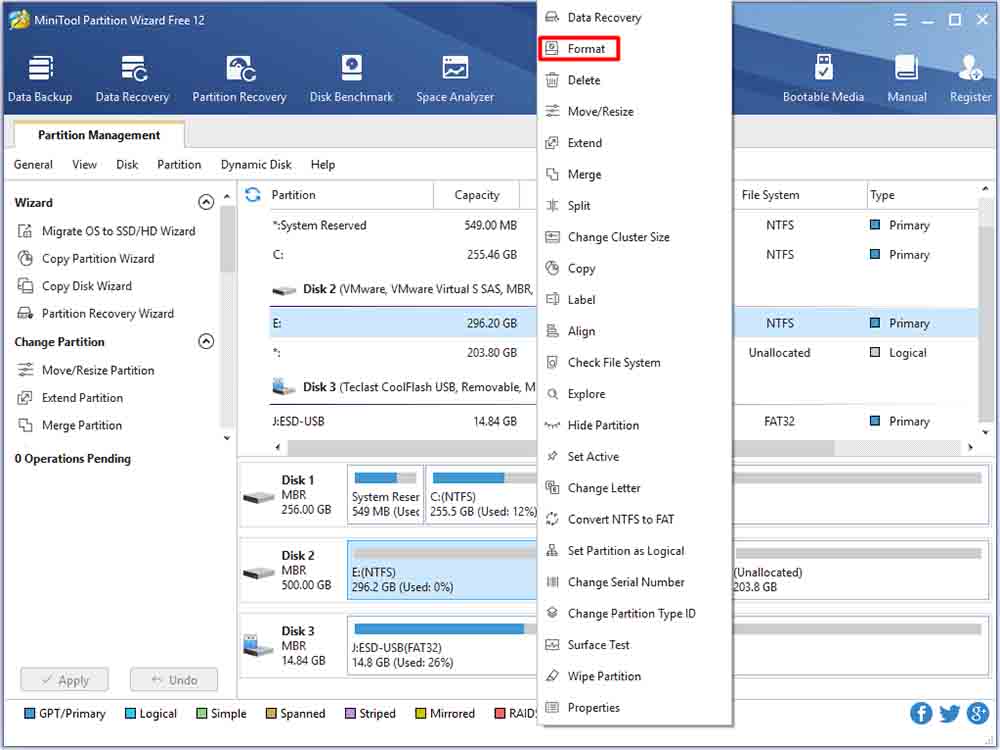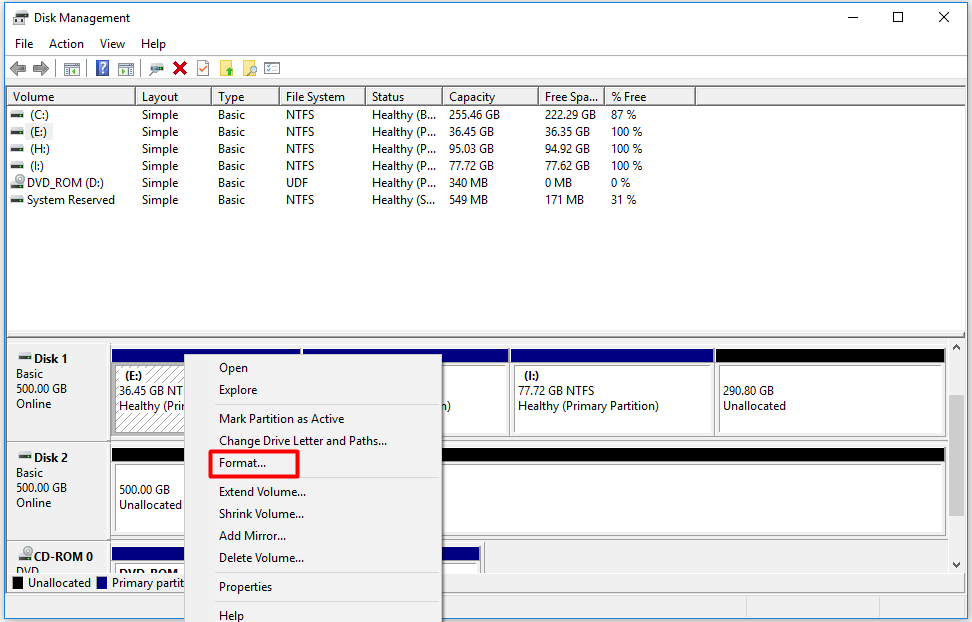What Does Formatting A Drive Do
A Full Format runs an additional step that checks the hard drive for any bad sectors. This check is what makes the full format take so much longer than a quick format. Unfortunately, like the quick format, the files still exist and the volume could be re-built to gain access. Issuing a “format” command on a drive does not remove the data. It just removes all the indexing. Formatting is similar to all the store clerks taking a vacation at the same time. The shelves are still fully stocked, but no one knows where to find anything. Formatting a hard drive means to delete all the data on the drive and set a file system to prepare an available space for the operating system. Disk formatting is the process of preparing a data storage device such as a hard drive, sloid state drive for initial use. Formatting can be divided into three parts.
When you buy a custom USB flash drive, the possibility of formatting will likely never cross the average user’s mind. All you want to worry about is plugging it into a USB port and transferring files. However, the underlying importance of flash drive formatting cannot be ignored.
The easiest way to describe formatting is that it preps your USB drive for proper use by your computer. It creates a filing system that makes your data organized while allowing you to store the most files possible. This virtual high tech filing cabinet organizes your files in a way that makes your flash drive perform at its best. Formatting is also equivalent to a clean slate in that it erases any data you may have on your flash drive. It should be used as a last resort when other troubleshooting methods to combat corrupted or unrecognized devices are ineffective.
Flash drive formatting has its advantages. It’s the best way to wipe the data from your flash drive with ease and speed. Another benefit of formatting is that it can allow you to customize security settings like user permission on particular files. It helps you to compress files so that more space can be used on your custom USB flash drive. In some instances, formatting is necessary to add new, updated software to your flash drive.
We can’t talk about formatting without talking about file allocation. File allocation methods are systems that determine how and where your files are digitally stored. It describes to your operating system where to find all of the clusters of data that comprise a file. Common file systems for storage devices include: FAT, FAT32, exFAT and NTFS.

NTFS uses less fragmentation and therefore manages space more effectively than its counterparts. It also excels at transferring files larger than 4GB and creating large partitions. However, this system isn’t always optimal for USB flash drives unless you need to transfer extra large files; you’ll see it pop up more frequently with hard drives.
FAT and FAT32 are supported by nearly every operating system, use less memory and work faster. The file system exFAT combines the best of both NTFS and FAT for flash drives by reading and writing larger files at a faster speed.
Formatting is not complex either. If you have your flash drive and computer system, you already have all the tools you need. Right-click on your flash drive under My Computer and select Format. Choose from the drop down menu for File System to change it to its desired format. Default is generally FAT 32. Uncheck Quick Format if needed. Next, click Start and click OK to bypass the deletion warning. As a result, tinker with formatting at our own risk since it will delete all of your current files.
How does formatting a flash drive benefit your use? Share your comments with us!
Most external hard drives are designed to work for Windows computers. So if you’re trying to connect an external hard drive to a Mac, you might have to format the drive before you can use it. Here’s how to do that:
How to Format a Hard Drive for Mac
Note: If you already used your external hard drive on a PC, be sure to back up any files on it. Formatting your drive will wipe out all the data in it.
- Connect an external hard drive to your Mac. Some external hard drives need to be plugged into an outlet to work.
- Go to Spotlight Search, type in Disk Utility, and click the first option. This will open the Disk Utility app, where you will find all the internal and external drives that are connected to your Mac.
- Then click View in the top-left corner of the window and select Show All Devices.
- Click the external hard drive you want to format. You can find this on the left-hand side of the screen under External Hard Drives. For the best result, select the disk (the highest option in the external tree).
- On the top menu, click Erase. This will open a small pop-up window with a warning that erasing the drive will delete all data stored on it and that it can’t be undone.
- Choose a name, format, and scheme for your drive. You can choose whatever name you want, and you should choose GUID Partition Map for the Scheme in most cases. However, you can choose between the following formats:
- Mac OS Extended (Journaled) is the best option for most Mac users since it is compatible with all Macs.
- APFS (Apple File System) is only for newer Macs running macOS 10.13 or later.
- exFAT is compatible with both PC and Mac.
- MS-DOS (FAT) is also compatible with Mac and PC, but you can only transfer files smaller than 4GB.
- When you’re done with providing the setup details, click Erase. This will immediately wipe the entire drive.
If you get an error message that states, “Erase process has failed. Click done tocontinue,” don’t freak out about it. This is an issue caused by Time Machine running on your externaldrive.
You will need to turn off Time Machine. You can do this by opening System Preferences and unchecking the boxnext to “Back Up Automatically”.Then click Options beside “ShowTime Machine in menu bar.” This will open another window. Click Cancel and it will turn off the Time Machine.
After you turn off the Time Machine, redo steps 4 to 6.
How to Partition anExternal Hard Drive on Mac

If you have formattedyour drive, you can then partition the drive, which will splitthe drive into two formats. This is perfect for anyone who uses Macs and PCsand wants to transfer files between the different operating systems with anexternal drive. Here’s how to do that:
- Open Disk Utility and select the drive that you want to partition. It is best to click View > Show All Devices so you can selectthe disk rather than a container.
- In the top menu, select Partition.
- Then click the plus sign at the bottom of the pie chart. Every time you click this plus sign, a new partition will becreated.
- Choose a name, format and size for each partition. You can also change the size of each of the partitions bydragging the white dots at the edge of the circle.
- Finally click Apply.
What Does Formatting A Drive Do Google
Why Partition a Hard Drive?
Partitioning an external hard drive allows youto have separate drives for Mac, PC, and any other operating system. Now youdon’t have to go out and buy hard drives for every computer you use.
How To Format A Disc
A partition also gives you a dedicated space foryour Time Machine back-up files or a bootable backup of your operating system.It also helps protect your data if your drive gets infected with malware, as itwould be contained within one of the partitions.
Now that you know how to format an external drive for Mac, check out our blog on the difference between an HDD and an SDD.